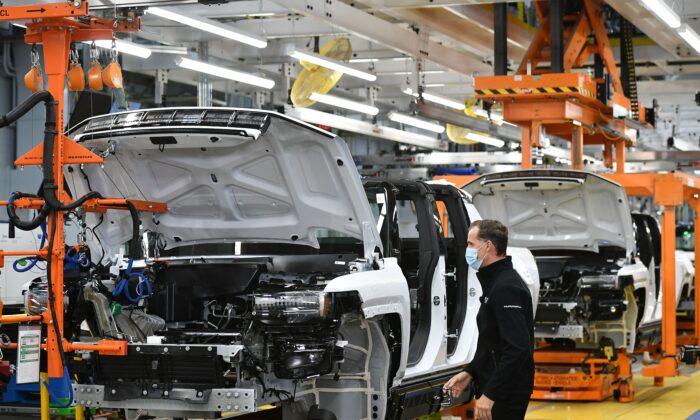U.S. business equipment orders rebounded in October, suggesting that investment plans are holding up despite economic uncertainty.
Capital spending plans by American manufacturers have stood firm despite higher interest rates and a cool down in demand, as resilient domestic consumer spending continues to sustain production.
The manufacturing sector, which currently accounts for 11.3 percent of the U.S. economy, has been hurt by a strong dollar due to the Federal Reserve’s tight monetary policy, an inventory overhang, and weakening global demand.
Durable goods orders in October rose by 1 percent, or by $2.8 billion, on a monthly basis to $277.4 billion, according to the U.S. Census Bureau data released on Nov. 23.
This is the largest increase most in four months, bolstered by domestic orders for transportation equipment and military aircraft.
However, a deteriorating economic situation overseas, has led to a decline in demand from foreign consumers.
This is an improvement from the previous month’s 0.3 percent increase and better than the market’s 0.4 percent projection for October.
Excluding transportation equipment, durable goods orders last month ticked up 0.5 percent after falling sharply in September.
“Excluding defense, new orders increased 0.8 percent. Transportation equipment, up six of the last seven months, led the increase, $2.0 billion or 2.1 percent to $97.8 billion,” the report read.
Core Capital Goods Orders Increase
Meanwhile, core capital goods orders—a closely watched proxy for future business investments, excluding aircraft and military hardware—rose 0.7 percent in October after a 0.8 percent decline in September.The data was not adjusted for inflation.
Overall, demand for core capital goods increased 9.2 percent on a year-on-year basis last month.
Demand for American-produced machinery, computers, electronic products, electrical equipment, appliances, and components increased but orders for primary metals fell.
Bookings for motor vehicles increased 0.6 percent, while civilian aircraft orders—which tend to be volatile month to month—rose 7.4 percent after surging 23.4 percent in September.
Boeing announced that it had received 122 aircraft orders last month compared to 96 in September.
“This proxy for business investment is encouraging in that it suggests a vote of confidence from businesses that recent forecasts of recession overestimate the risk,” James Picerno, a business writer, said on Twitter regarding the boost in civilian aircraft orders.Orders for military aircraft, another volatile category, increased 21.7 percent after falling greatly last month as total demand for defense capital goods rose.
Unfilled orders for all durable goods increased, while inventories edged up, according to the report.
The growth in orders for October, was the largest increase since the start of the year, which is a good sign so far for fourth quarter GDP estimates.Preliminary results for the final quarter will be released in late January.
US Manufacturers Adapting to Higher Interest Rates, Cost Pressures
The latest figures suggest that American companies were largely able to adapt their capital spending plans in an uncertain economic climate, as they seek to boost productivity and circumvent lingering cost pressures.However, recent data over the past few weeks are pointing to a future loss of momentum, despite a rebound in core capital goods orders and shipments last month.
The Fed’s aggressive series of interest rate hikes, which are expected to continue, have forced many companies to gradually pullback their investments.
Recent regional Fed bank manufacturing surveys pointed to slowing business activity in October.
The decline in manufacturing appears to have lingered into November in the regions covered by the Philadelphia and Richmond Fed.
The U.S. Dollar Index edged lower with the initial reaction to the report to 106.30, ahead of the initial release of the FOMC meeting minutes.






Friends Read Free